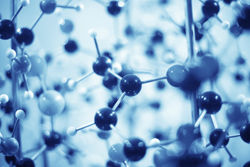Unravelling intermolecular interactions
A new approach for studying molecular interactions within molecular aggregates combines high-resolution spectroscopy with superfluid helium nanodroplets. The molecules embedded by the helium droplet are cooled down, facilitating the stabilisation and experimental investigation of local energy minima. The key objective of the EU-funded 'Molecular aggregation and microsolvation in ultracold helium nanodroplets' (MOLHENANO) project was to apply this method of helium nanodroplets to study molecular aggregates of biological importance. Scientists were particularly interested in investigating pyridine aggregation and the water–pyridine interaction as proof-of-principle. Pyridines are heterocyclic molecules used in the synthesis of various pharmaceuticals. Contrary to calculation predictions, delineation of the pyridine dimer unravelled one possible energy-minimum structure. Pyridine interaction with a single water molecule was found to occur in two ways, giving rise to two potential energy-minimum structures. In one of the structures the nitrogen atom paired up with the hydrogen from the water, while in the other conformation the bond was formed between the pyridine oxygen and the hydrogen. The MOLHENANO method of using helium droplets in combination with high-resolution infrared spectroscopy provides a sensitive method for determining the chemical configuration of macromolecules. It is also expected to extend the applications of physical chemistry to the study of biological processes.







